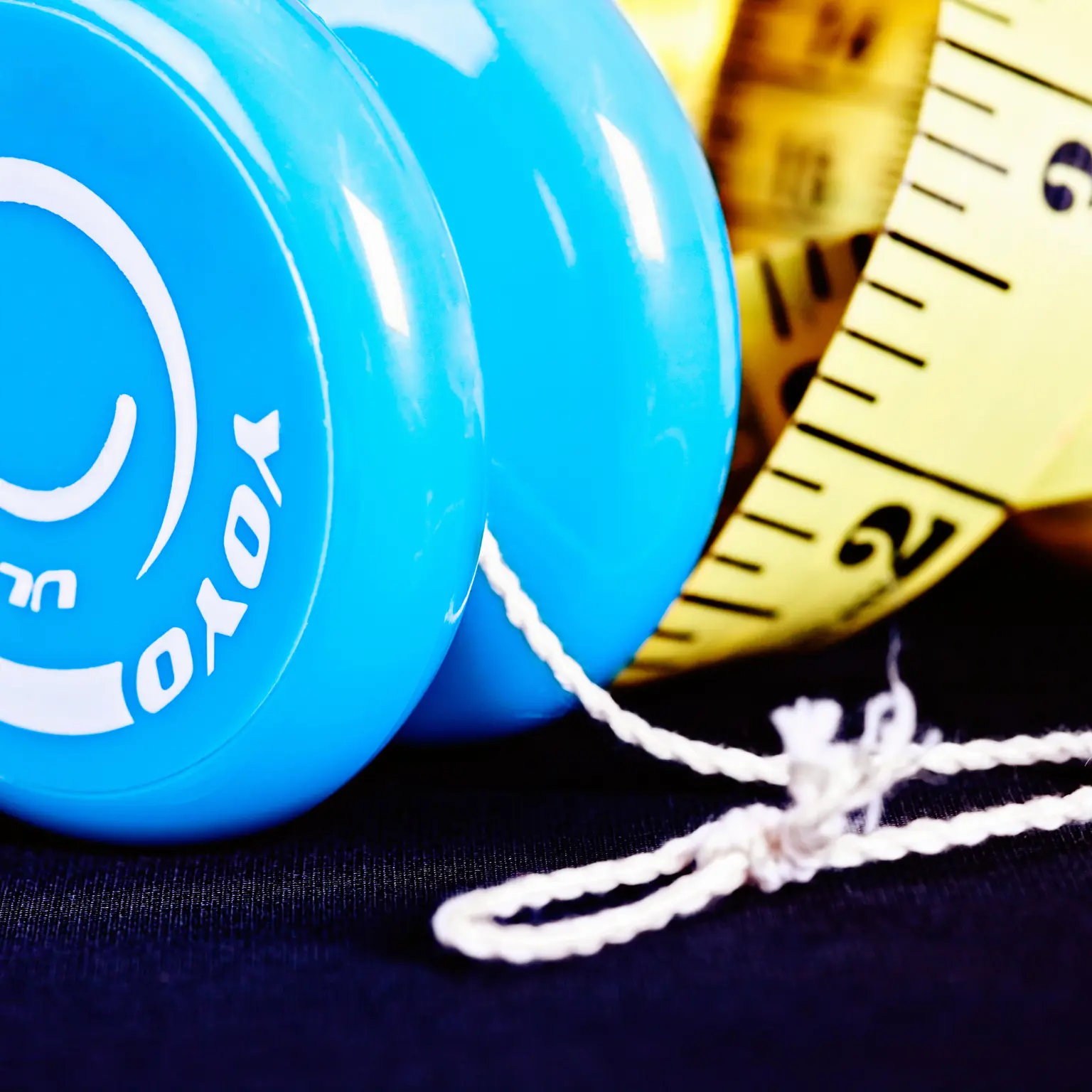Your First Steps to Weight Loss: A Beginner’s Guide

At Healthy Stride Wellness, we aim to empower individuals on their path to optimal health and well-being, providing guidance and support during their transformative journey towards a healthier life.
This beginner’s guide offers a solid foundation for weight loss success, covering the fundamentals of shedding excess weight, healthy eating strategies, and the importance of physical activity.
Sustainable weight loss involves gradual, lasting changes aligned with your lifestyle, enhancing overall well-being rather than being a fleeting endeavor.
Table of Contents
Key Takeaways
- Sustainable weight loss requires understanding the fundamentals, building a healthy eating plan, engaging in physical activity, and cultivating a positive mindset.
- Focus on balanced nutrition with plenty of fruits, vegetables, whole grains, lean proteins, and healthy fats.
- Practice mindful eating and limit processed foods. Avoid skipping meals or starving yourself.
- Engage in physical activities you enjoy, starting slowly and gradually increasing intensity and duration.
- Any movement is beneficial, even small amounts can make a significant impact.
Understanding Weight Loss Fundamentals
Before we dive into the nitty-gritty of shedding those extra pounds, let’s take a moment to grasp the basic principles of weight loss. By understanding how weight loss works, you’ll be better equipped to make informed decisions and create a sustainable plan that suits your individual needs.
What is Weight Loss?
At its core, weight loss is a simple equation: calories in versus calories out. Your body needs a certain number of calories to function – this is known as your basal metabolic rate (BMR). When you consume more calories than your body burns through daily activities and exercise, the excess is stored as fat, leading to weight gain. Conversely, when you consume fewer calories than your body burns, it taps into those fat stores for energy, resulting in weight loss.
Your metabolism plays a crucial role in this process. It refers to the chemical reactions in your body that convert food into energy. Several factors can influence your metabolism, including age, genetics, muscle mass, and hormone levels. While you can’t control all these factors, you can boost your metabolism by building muscle through strength training and staying physically active.
Setting Realistic Weight Loss Goals
One of the most important first steps to weight loss for beginners is setting realistic goals. While it’s tempting to aim for a dramatic transformation overnight, sustainable weight loss is a gradual process. Setting overly ambitious goals can lead to frustration and disappointment, ultimately derailing your efforts.
Instead, focus on SMART goals:
- Specific: Define your goals clearly. Instead of saying “I want to lose weight,” state “I want to lose 10 pounds.”
- Measurable: Track your progress to stay motivated and adjust as needed.
- Achievable: Set goals that are challenging but within reach, considering your lifestyle and resources.
- Relevant: Ensure your goals align with your overall health and well-being.
- Time-bound: Give yourself a realistic timeframe to achieve your goals.
Remember, losing 1-2 pounds per week is considered a healthy and sustainable weight loss rate. By setting realistic expectations and celebrating small victories along the way, you’ll be more likely to stay motivated and achieve long-term success.
Creating a Calorie Deficit
To lose weight, you need to create a calorie deficit, meaning you consume fewer calories than your body burns. There are two primary ways to achieve this:
- Reduce Calorie Intake: This involves making mindful food choices, controlling portion sizes, and opting for nutrient-dense foods over calorie-dense ones.
- Increase Calorie Expenditure: This can be done through exercise, increasing daily activity levels, and building muscle.
To determine your daily calorie needs, you can use online calculators or consult a registered dietitian. Once you know your calorie target, you can create a deficit by reducing your intake, increasing your activity level, or a combination of both.
It’s important to note that not all calories are equal. A calorie deficit created through highly processed, sugary foods will not have the same impact as one created through whole, nutritious foods. Focus on quality over quantity, and choose foods that will nourish your body and support your weight loss goals.
Building a Healthy Eating Plan
Now that we’ve covered the fundamentals of weight loss, let’s delve into the cornerstone of any successful weight loss journey: a healthy eating plan. Remember, sustainable weight loss is not about deprivation or extreme diets. It’s about nourishing your body with wholesome foods that fuel your energy levels, satisfy your taste buds, and support your overall health.
The Importance of Balanced Nutrition
The key to healthy eating is balanced nutrition. Our bodies need various nutrients to function optimally. These nutrients are categorized into macronutrients and micronutrients.
- Macronutrients: These are the nutrients we need in larger amounts and include carbohydrates, protein, and fat.
- Micronutrients: These are the nutrients we need in smaller amounts and include vitamins and minerals.
A balanced diet includes a variety of foods from all food groups to ensure you’re getting all the nutrients your body needs. This means incorporating plenty of fruits, vegetables, whole grains, lean proteins, and healthy fats into your meals. By focusing on whole, unprocessed foods, you’ll naturally reduce your intake of added sugars, unhealthy fats, and empty calories, which can sabotage your weight loss efforts.
Tips for Eating for Weight Loss
Eating for weight loss doesn’t have to be complicated or restrictive. Here are some practical tips to help you make healthier choices and create a sustainable eating plan:
- Portion Control: Be mindful of portion sizes to avoid overeating. Use measuring cups, a food scale, or your hand as a guide.
- Mindful Eating: Pay attention to your food while eating. Savor the flavors, textures, and aromas. This can help you feel more satisfied and prevent overeating.
- Choose Nutrient-Dense Foods: Opt for foods that are high in nutrients and low in calories, such as fruits, vegetables, whole grains, lean proteins, and healthy fats.
- Limit Processed Foods: Processed foods are often high in added sugars, unhealthy fats, and sodium, which can hinder weight loss and negatively impact your health.
- Hydrate: Drink plenty of water throughout the day. Water helps you feel full, boosts your metabolism, and flushes out toxins.
- Meal Prep: Planning and preparing your meals in advance can help you make healthier choices and avoid impulsive, unhealthy eating.
- Don’t Skip Meals: Skipping meals can lead to overeating later in the day and disrupt your metabolism. Aim for regular, balanced meals to keep your blood sugar stable and your energy levels up.
By incorporating these tips into your daily routine, you’ll be well on your way to creating a healthy eating plan that supports your weight loss goals and nourishes your body from the inside out.
Navigating Cravings and Emotional Eating
Let’s face it – cravings and emotional eating are common challenges on any weight loss journey. We’ve all been there, reaching for that bag of chips or a pint of ice cream when we’re feeling stressed, bored, or simply in need of comfort. While occasional indulgences are perfectly fine, succumbing to cravings or emotional eating too often can derail your progress.
Here are some strategies to help you navigate these tricky situations:
- Identify Your Triggers: Pay attention to what situations, emotions, or thoughts tend to trigger your cravings or emotional eating. Once you know your triggers, you can start to develop coping mechanisms.
- Find Healthy Alternatives: If you’re craving something sweet, try a piece of fruit or a small square of dark chocolate. If you’re craving something salty, try a handful of nuts or seeds.
- Distract Yourself: When a craving hits, try to distract yourself with another activity. Go for a walk, call a friend, or read a book.
- Practice Mindful Eating: When you do indulge in a treat, savor every bite. Pay attention to the flavors, textures, and aromas. This can help you feel more satisfied and prevent overeating.
- Manage Stress: Stress can be a major trigger for cravings and emotional eating. Find healthy ways to manage stress, like exercise, meditation, or spending time in nature.
- Seek Support: If you’re struggling with cravings or emotional eating, don’t hesitate to seek support from a friend, family member, therapist, or registered dietitian.
Remember, overcoming cravings and emotional eating takes time and practice. Be patient with yourself, and don’t give up if you slip up occasionally. Just pick yourself up, dust yourself off, and keep moving forward.
Incorporating Physical Activity
While a healthy eating plan is essential for weight loss, physical activity plays a crucial role in achieving and maintaining your goals. Exercise not only burns calories but also offers numerous benefits for your physical and mental well-being. It strengthens your muscles, improves cardiovascular health, boosts your mood, reduces stress, and enhances your overall quality of life.
Finding an Exercise Routine You Enjoy
The key to incorporating exercise into your weight loss journey is finding activities you genuinely enjoy. If you dread your workouts, it’s much harder to stay consistent. Experiment with different types of exercise, such as:
- Cardio: Activities like brisk walking, running, swimming, cycling, or dancing get your heart rate up and burn calories.
- Strength Training: Lifting weights, using resistance bands, or doing bodyweight exercises builds muscle mass, which boosts your metabolism and helps you burn more calories at rest.
- Flexibility and Balance: Yoga, Pilates, or tai chi improve your flexibility, balance, and posture, which can reduce your risk of injuries.
- Mind-Body Practices: Meditation, deep breathing exercises, or gentle yoga can help reduce stress and improve your overall well-being.
The most important thing is to find activities that fit your lifestyle, interests, and fitness level. Start gradually and gradually increase the frequency, duration, and intensity of your workouts as you get stronger and more fit.
Tips for Getting Started with Exercise
If you’re new to exercise or haven’t been active in a while, it’s important to start slowly and gradually increase your activity levels. Here are some tips for getting started:
- Set Realistic Goals: Don’t try to do too much too soon. Start with small, achievable goals, like walking for 20 minutes three times a week.
- Find a Workout Buddy: Having a workout buddy can help you stay motivated and accountable.
- Make It Fun: Choose activities you enjoy, and don’t be afraid to try new things.
- Schedule Your Workouts: Treat your workouts like any other important appointment. Schedule them in your calendar and make them a priority.
- Listen to Your Body: If you’re feeling pain, stop and rest. Don’t push yourself too hard, especially when you’re first starting.
- Track Your Progress: Keeping track of your workouts can help you stay motivated and see how far you’ve come.
Remember, any movement is better than none. Even small amounts of physical activity can make a big difference in your weight loss journey and overall health. So, get up, get moving, and start reaping the benefits of exercise today!
The Role of Mindset and Motivation
A weight loss journey requires more than diet changes and exercise. It also demands a shift in mindset and a healthy dose of motivation. Your thoughts, beliefs, and attitudes play a crucial role in your success.
Cultivating a Positive Mindset
Your mindset is a powerful tool that can propel you forward or hold you back. Negative self-talk, self-doubt, and unrealistic expectations can sabotage your efforts, while a positive mindset can fuel your motivation and resilience.
Here are some tips for cultivating a positive mindset for weight loss:
- Challenge Negative Thoughts: When you catch yourself thinking negative thoughts like “I can’t do this” or “I’ll never lose weight,” challenge those thoughts with positive affirmations like “I am strong and capable” or “I am committed to my goals.”
- Focus on Progress, Not Perfection: Remember that progress, not perfection, is the goal. Celebrate your small victories and learn from your setbacks.
- Practice Self-Compassion: Be kind to yourself throughout your journey. Don’t beat yourself up for slip-ups or setbacks. Everyone makes mistakes. The important thing is to learn from them and move forward.
- Surround Yourself with Positive People: Surround yourself with people who support and encourage you. Avoid negative influences that can derail your progress.
- Visualize Success: Imagine yourself achieving your weight loss goals. Visualize how you’ll look, feel, and act. This can help you stay motivated and focused on your goals.
By cultivating a positive mindset, you’ll be better equipped to handle the challenges and setbacks that inevitably arise on your weight loss journey.
Staying Motivated on Your Journey
Staying motivated can be a challenge, especially when progress is slow or setbacks occur. Here are some strategies to keep you motivated and on track:
- Set Milestones: Break down your larger goals into smaller, more manageable milestones. This will make your journey feel less daunting and give you a sense of accomplishment as you reach each milestone.
- Track Your Progress: Keep track of your weight, measurements, and body fat percentage. This will help you see how far you’ve come and stay motivated to keep going.
- Reward Yourself: Celebrate your achievements with non-food rewards, such as a new workout outfit, a massage, or a fun activity.
- Find a Support System: Share your goals with friends, family, or a support group. Having people to cheer you on and hold you accountable can make a big difference.
- Don’t Give Up: Remember that weight loss is not a linear process. There will be ups and downs. Don’t give up if you have a setback. Just pick yourself up, dust yourself off, and keep moving forward.
By staying motivated and focused on your goals, you’ll be more likely to achieve long-term weight loss success. Remember, Healthy Stride Wellness is here to support you every step of the way.
Common Weight Loss Mistakes to Avoid
As you embark on your weight loss journey, it’s important to be aware of common pitfalls that can hinder your progress. By avoiding these mistakes, you’ll set yourself up for success and ensure a sustainable, healthy approach to weight loss.
Crash Dieting and Restrictive Eating
Crash diets and restrictive eating patterns may promise rapid weight loss, but they often backfire in the long run. These diets typically involve severely limiting calorie intake or eliminating entire food groups, which can lead to nutrient deficiencies, rebound weight gain, and a slower metabolism.
Your body needs a variety of nutrients to function optimally, and depriving it of essential nutrients can have negative consequences for your health. Additionally, extreme diets are often unsustainable, leading to feelings of deprivation and a higher likelihood of binge eating.
Instead of crash dieting, focus on making sustainable changes to your eating habits. Gradually reduce your calorie intake by making healthier food choices and controlling portion sizes. This approach will help you lose weight gradually and keep it off in the long run.
Skipping Meals or Starving Yourself
Skipping meals may seem like a quick way to cut calories, but it can actually sabotage your weight loss efforts. When you skip meals, your blood sugar levels drop, leading to increased hunger and cravings. This can cause overeating at your next meal or reaching for unhealthy snacks.
Additionally, skipping meals can slow down your metabolism, making it harder to lose weight. Your body goes into “starvation mode” when it’s not getting enough fuel, so it starts to conserve energy by burning fewer calories.
To support your weight loss goals, aim to eat regular, balanced meals throughout the day. This will help you maintain stable blood sugar levels, control your appetite, and keep your metabolism revved up.
Relying on Quick Fixes and Fad Diets
The internet is flooded with claims of quick fixes and fad diets that promise effortless weight loss. However, most of these claims are not backed by scientific evidence, and these diets often lead to short-term results at best.
Many fad diets are overly restrictive, eliminating entire food groups or promoting the consumption of a single food or supplement. This can lead to nutrient deficiencies and unhealthy eating patterns. Additionally, these diets are often unsustainable, leading to weight regain once you return to your normal eating habits.
Instead of falling for quick fixes and fad diets, focus on making sustainable lifestyle changes that you can maintain long-term. This includes eating a balanced diet, exercising regularly, managing stress, and getting enough sleep. These evidence-based strategies are the key to achieving and maintaining a healthy weight.
Last But Not Least
Embarking on your weight loss journey is a significant step towards a healthier and happier life. Healthy Stride Wellness has brought this insight to you, guiding you through the essential first steps to weight loss for beginners. It’s a journey that requires understanding, dedication, and a positive mindset. Remember, it’s not about quick fixes or fad diets, but about making sustainable changes that will benefit your overall well-being.
As we’ve explored in this beginner’s guide weight loss is a multifaceted process. It starts with understanding the fundamentals, such as the concept of calories in versus calories out, and the importance of setting realistic goals. Building a healthy eating plan is crucial. Focus on balanced nutrition, portion control, and mindful eating. Incorporating physical activity into your routine not only helps you burn calories but also offers numerous physical and mental health benefits.
Nurturing a positive mindset and staying motivated are essential for long-term success. Challenges and setbacks are inevitable, but with the right mindset and strategies, you can overcome them and stay on track. Avoid common mistakes like crash dieting, skipping meals, and relying on quick fixes. Focus on sustainable lifestyle changes that will support your weight loss journey for years to come.
Want to learn more about weight loss? Check out our in-depth guide on 10 Proven Weight Loss Tips for Lasting Success
FAQs
As you embark on your weight loss journey, it’s natural to have questions. Here, we address some of the most common queries beginners have about shedding those extra pounds:
How much weight can I realistically lose per week?
A safe and sustainable rate of weight loss is typically 1-2 pounds per week. However, this can vary depending on your starting weight, metabolism, and the specific strategies you implement. Remember, slow and steady wins the race!
Are there certain foods I should avoid for weight loss?
While there’s no single food that magically causes weight gain, it’s wise to limit or avoid highly processed foods, sugary drinks, refined grains, and unhealthy fats. These foods are often high in calories and low in nutrients, which can hinder your weight loss efforts.
Is it necessary to track calories?
Tracking calories can be a helpful tool for creating a calorie deficit and monitoring your food intake. However, it’s not necessary for everyone. Some people find it motivating and informative, while others find it tedious and stressful. If calorie counting isn’t for you, focus on making healthy food choices and controlling portion sizes.
Can I still enjoy social events while losing weight?
Absolutely! Weight loss shouldn’t mean sacrificing your social life. With a little planning and mindful choices, you can still enjoy dining out and attending social gatherings. Look for healthier options on the menu, share dishes with friends, and limit your alcohol intake. Remember, moderation is key.
What if I hit a weight loss plateau?
Weight loss plateaus are common. Your body may adjust to your new eating and exercise habits, temporarily halting your progress. If you hit a plateau, don’t panic. Try switching up your workouts, adjusting your calorie intake, or focusing on non-scale victories like increased energy levels or improved fitness.
Please Note: Healthy Stride Wellness provides educational content and is not a replacement for medical advice. Consult a healthcare provider for any health issues.




